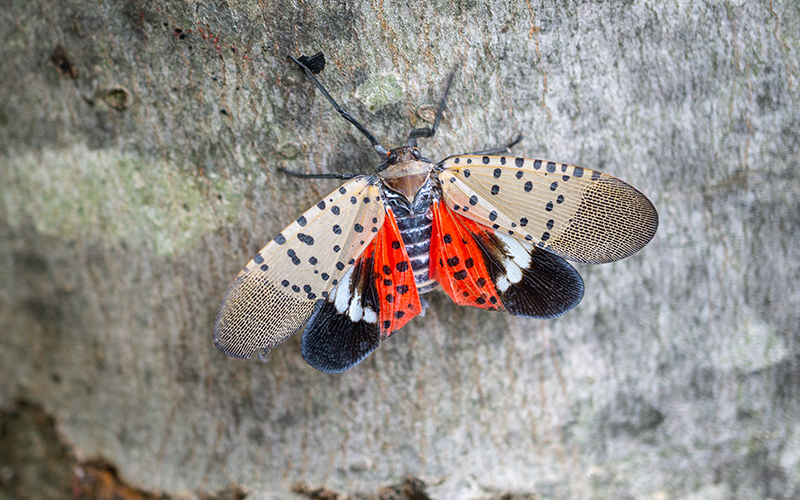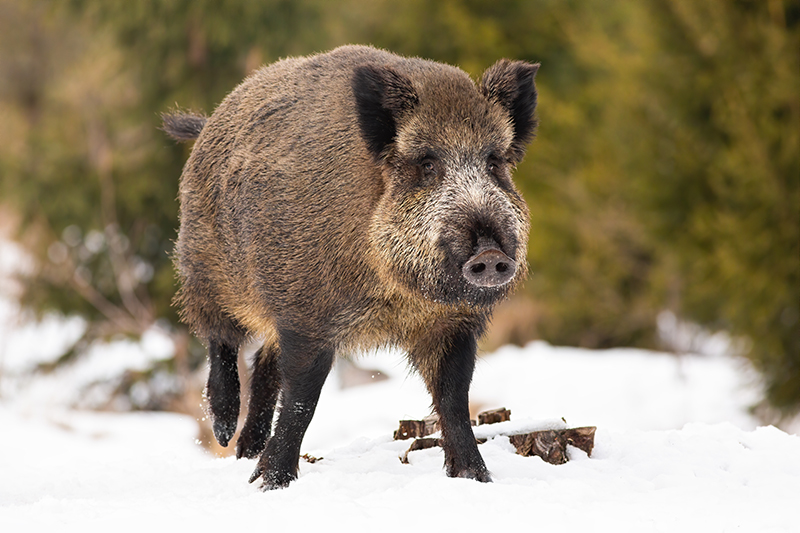Leading the Fight against Habitat Destruction
Lakehead’s Ontario Youth Naturalist program now teaches high school students about invasive species.
The second leading cause of biodiversity loss may come as a shock—fragile ecosystems around the world are being destroyed by invasive plant, insect, and animal species.
And their negative effects aren't confined to the environment. Invasive species cost the Ontario economy alone $3.6 billion a year. They can also ruin previously enjoyable outdoor experiences. The sharp thorns of the European water chestnut, for example, can pierce the skin of sunbathers and swimmers.
Since 2011, the Invasive Species Centre has been doing everything they can to prevent the introduction and spread of high-risk invasive species to Canada.
"We coordinate responses between the federal, provincial, and municipal levels of government, Indigenous communities, industry, and community organizations," explains Colin Cassin, the Centre's Invasive Species Policy Manager.
Over the last two years they've generously funded the invasive species module of Lakehead Orillia's Ontario Youth Naturalist Program run by the University's Office of Community Engagement and Lifelong Learning.
As part of the Invasive Species Centre's 10th anniversary celebrations, they created micro-grants for these kinds of community-level initiatives.
"Education is the first line of defence against invasive species," Colin says. "The more people that are looking for them, the better. We have a hotline that anyone can call to report them, or they can use a phone app like the EDDMapS - Early Detection and Distribution Mapping System."

The Invasive Species Centre is concerned that the spotted lantern fly will soon cross over from the United States and into Canada's Niagara region. These leaf eaters defoliate plants such as grapevines, blueberries, hops, and stone fruits like peaches. They can severely damage the wine, beer, and fruit-growing industries. Photo Credit: iStock/arlutz73
Students who participate in the Ontario Youth Naturalist Program—offered in partnership with Parks Canada—are able to broaden their knowledge of the natural world through formal training that encompasses both classroom learning and field trips. By the time they complete the program, they are avid naturalists well equipped to protect the habitats that surround them.
"Our vision with Lakehead is to enable high school students to learn about invasive species propagation, management, and eradication methods, and to motivate them to get involved as community scientists and environmental activists," Colin says.
Some major entry points for invasive species are airports, international borders, and shipping ports. Adding to the problem is a warming climate that attracts invasive species that previously couldn't survive Canadian winters.
In Simcoe County, the species inflicting the greatest ecological and economic harm is an invasive grass found in wetland areas called phragmites. This grass causes flooding that costs municipalities huge amounts of money and damages the habitats of turtles, birds, and native plants.
Colin says an emerging threat that Simcoe County residents should watch out for are wild pigs that have gotten loose from farms, usually because of damaged fences. The rooting and wallowing behaviours of pigs—which weigh several hundred pounds each—can easily wipe out native plant communities.

Wild pigs and wild boars are causing havoc to natural habitats. In addition, boars can be extremely aggressive—their tusks are razor-blade sharp, and they've caused human deaths. Photo Credit: iStock/JMrocek
"Community science is a big area of effort for us because it's often a community member with a sense of curiosity who first discovers an invasive species," Colin explains.
This was the case when a motorist in a parking lot at the Pearson International Airport reported an odd-looking insect crawling on their car windshield. It turned out to be a long-horned beetle that attacks maple trees. The Canadian Food Inspection Agency, one of the lead agencies working on invasive species, removed all the trees around Pearson and was able to successfully eradicate the beetle before it spread.
"Had they not reported it and it went undetected for several years, it would have been catastrophic for maple syrup producers and hardwood furniture manufacturers," Colin says.
It's just one of the stories that reinforced the Invasive Species Centre's decision to support Lakehead's outreach work. "The Ontario Youth Naturalist Program is a great example of what a small investment can do for early detection."
